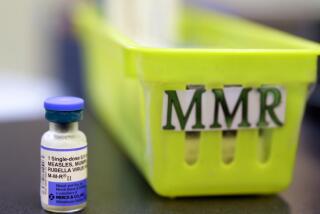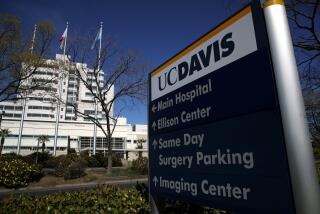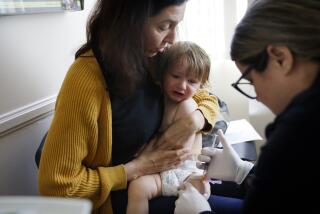How California got more children vaccinated after the Disneyland measles outbreak

In early 2015, vaccinations became a national story in California after an outbreak of measles at Disneyland.
The situation drew attention to the number of parents who receive exemptions from getting their kids vaccinated. And that prompted new state legislation.
Now, there are new numbers suggesting these laws are working.
What does the new data show?
New data released Wednesday showed that the percentage of California’s kindergartners with all required vaccinations as of last fall rose from 92.8% to 95.6%. Los Angeles County’s rate jumped from 90% to 95%, and Orange County’s rose from 92.5% to 95.5%.
More kindergartners also were getting the measles vaccination. In California, 97.3% of the young students received measles shots, up from 94.5% a year ago and 92.6% reported in the fall of 2014, just before the Disneyland measles outbreak struck.
Vaccination rates for whooping cough, also known as pertussis, posted similar numbers.
Experts say the conditions for measles outbreaks are enhanced if the vaccination rate is less than 95%.
Why did vaccination rates decline?
The drop in vaccinations came amid growing public concern about the safety of vaccines and whether they cause autism, a fear that stemmed from a report in a British scientific journal published in 1998. The article was retracted and declared to be a “deliberate fraud.” Numerous studies since have provided overwhelming evidence that vaccines are safe.
But the damage was done. By 2013, California’s measles vaccination rate among kindergartners hit a low of 92.3%. A year later, the measles outbreak struck at Disneyland and grew to become California’s worst since 1991, ultimately infecting more than 150 people and spreading to other states. An analysis published in the journal JAMA Pediatrics said the disease spread was fueled by parents who declined to vaccinate their children.
What turned things around?
There probably are several factors.
One appears to be a state law that made it significantly tougher for parents to exempt schoolchildren from shots.
Lawmakers who authored the vaccination law, known as SB 277, cheered the results.
Sen. Richard Pan (D-Sacramento), who also is a pediatrician, said in an interview Wednesday he was encouraged by this year’s vaccination rates, especially because they are higher than the minimum needed to keep a single measles case from spreading rapidly in California.
The law requires that students entering kindergarten and seventh grade have all their vaccinations, so schoolchildren older than kindergarten age eventually will be required to be fully immunized. But there are thousands of Californians who’ve already been promoted from seventh grade or graduated from high school without ever having received a vaccine.
The UC system has said it will require vaccines for all new enrollees, but most young adults won’t encounter another vaccination checkpoint once they leave high school.
“Measles certainly hasn’t gone away,” Pan said, pointing to outbreaks in Europe and one in Los Angeles County earlier this year. “We need to be sure to have our immunization levels high enough. The fact that this class and the state overall has now achieved this level is one further step to restore the community immunity we had before.”
But Pan noted that the law affects only very young children — and there is still a percentage of students who are not vaccinated because of the previously lax requirements. “This is one year, one step. We halted the bleeding,” he said.
Are there still some warning signs?
Eight of the state’s 58 counties had vaccination rates below 90%, according to the new data. Viruses circulate in neighborhoods and communities, so regions with low vaccination rates are at risk, Pan said. “We need to shrink those pockets.”
State data also show the percentage of kindergartners receiving a permanent medical exemption from vaccines has risen from 0.2% to 0.5%.
Pan said that increase most likely is because of legitimate medical reasons that previously had been sought under personal belief exemptions.
He said many parents whose children are eligible for vaccination exclusions previously had filed for a personal belief exemption because the paperwork was easier to obtain. Although parents no longer can opt out of vaccines for their children based on such criteria, Pan said the state still should monitor whether doctors are providing fraudulent medical exemptions, especially given the uptick in data.
ALSO
Vaccination rate jumps in California after tougher inoculation law
Will 2017 be the year the anti-vaccination movement goes mainstream?
More to Read
Sign up for Essential California
The most important California stories and recommendations in your inbox every morning.
You may occasionally receive promotional content from the Los Angeles Times.











